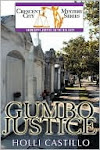Today, please welcome the guest blog of fellow writer Janet Greger, "Setting the Stage for Suspense."
Are the settings in your
novels as insipid as the description of Prince Charming in most fairy tales? Do
you describe a couple of physical characteristic, but don’t mention anything about
the personality of the locale?
Curiosity
draws readers to certain locations. I bet
many readers purchased a copy of Clavell’s Shogun before they traveled to Japan
and reread sections of The Da Vinci Code before they
visited Paris or Scotland. I dislike winter, but Smilla’s Sense of Snow
made me want to visit Greenland.
I’m
hoping readers, who want to “see” more of Cuba than vintage American cars, will
read my new medical thriller Malignancy. I juxtaposition the past
and present of Cuba. For example, in Malignancy you’ll learn about
cutting edge research being done in Cuban medical centers as Sara Almquist, an
epidemiologist and my protagonist, sets up scientific exchanges among Cuban and
U.S. scientists. It’s not far fetched; one group of Cuban researchers has patented
a vaccine against one type of lung cancer. You and Sara will slip into La
Floridita Bar, made famous by Hemingway, in Old Havana to meet a mysterious
Cuban. Is he just a physician or is he a spymaster? As you and Sara discover
historic quirks in Colon cemetery, you might bump into Sara’s past.
Some
locations breed intrigue. The
steamy and seamy sides of New Orleans have been featured in many novels. Think
about: Interview with the Vampire by Anne Rice, Jambalaya Justice by
Holli Castillo, and The Pelican Brief by John Grisham. These novels would not have
resonated with readers if they were set elsewhere.
I think
Bolivia is one of those mysterious, volatile places. The country is for the
physically fit - much of the country has an altitude of over ten thousand feet.
Bolivia has arguably some of the most colorfully dressed indigenous people in
the world. You’ll see them with Sara Almquist in Ignore the Pain, as she climbs
the narrow stone steps to the roof of Iglesia de San Francisco in La Paz and
looks down on the Witches’ Market. If that doesn’t sound exciting, please note
henchmen of a drug lord are chasing Sara. You’ll also get a different view of
coca, the source of cocaine, as you watch Sara question miners at the infamous
silver mines of Potosí. She’s there on a public health mission, and Bolivia is
a textbook-lesson on public health problems.
 Other
locations breed nostalgia for a happier or perhaps simpler time. Western fiction can be set in a number of
states in the US (Kansas, Texas, Wyoming, Colorado, or New Mexico), but
generally the setting is the same – a spare, dry land that exudes loneliness.
The protagonist generally looks like the land. He’s spare, often almost gaunt,
dry with little to say, and independent because he has to be to survive on the
land.
Other
locations breed nostalgia for a happier or perhaps simpler time. Western fiction can be set in a number of
states in the US (Kansas, Texas, Wyoming, Colorado, or New Mexico), but
generally the setting is the same – a spare, dry land that exudes loneliness.
The protagonist generally looks like the land. He’s spare, often almost gaunt,
dry with little to say, and independent because he has to be to survive on the
land.
What’s
the personality of the locales in your novels? Have you used them to set the
stage for suspense?
Blurb
for Malignancy. Men
disguised as police officers shoot at Sara Almquist twice in one day. The
Albuquerque police suspect Jim Mazzone, a drug czar who Sara has tangled with
several times, will order more hits on Sara. Thus when colleagues in the State
Department invite Sara to arrange scientific exchanges between the U.S. and
Cuba, she jumps at the chance to get out of town and to see the mysterious Xave Zack, who rescued her in Bolivia
again. Maybe,
she should question their motives.
Malignancy is the
sequel to Ignore the Pain.
Ignore
the Pain
Sara
Almquist couldn’t say no when invited to be the epidemiologist on a public
health mission to assess children’s health in Bolivia. Soon someone from her
past in New Mexico is chasing her through the Witches’ Market of La Paz and
trying to trap her at the silver mines of Potosí. Unfortunately, she can’t
trust her new colleagues, especially the seedy Xave Zack, because any one of
them might be under the control of the coca industry in Bolivia.
Ignore the Pain (paperback
& Kindle) is available at Amazon: http://amzn.com/1610091310.
Bio:
JL
Greger is no longer a biology professor at the University of Wisconsin-Madison,
instead she’s putting tidbits of science into her medical mysteries/ thrillers.
She and Bug, her Japanese Chin dog, live in the southwest of the Untied States.
Her novels
include: Coming Flu, Murder: A New Way to Lose Weight, Ignore
the Pain, and Malignancy. You can learn more about
her and her writing at her website: http://www.jlgreger.com and
blog JL Greger’s Bugs: http://www.jlgregerblog.blogspot.com.











6 comments:
Holli, thanks for inviting me to your blog.
Thanks so much for joining me. You and your books are always an interesting read.
Well stated, Janet! The setting should be as much a character as the villain or hero.
Thonie, thanks. t takes thought to bring out the "personality" of a location.
I agree, Janet. We write about Hawaii and Colorado, and I always want our readers to get the 'feel' of those places.
Lorna, I think many of us try to make our locations characters in our books.
Besides it gives us a chance to travel a bit to "collect" data.
Post a Comment